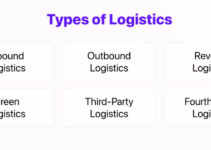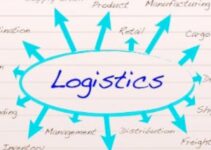Healthcare crises, limited funding, and other resources compel humanitarian organizations and NGOs to find innovative and creative logistics and supply chain processes. Today, we’ll discuss humanitarian logistics and supply chain management; its structure; required items, and challenges to HLSCM.
What is Humanitarian Logistics and Supply Chain Management?
Humanitarian logistics and supply chain management (HLSCM) is the method of planning, controlling, and executing the movement of products and materials from the production unit to the consumption point to relieve the pain and suffering of the needy and vulnerable people. Some of the main functions and activities of HLSCM are as follows;
- Preparing & getting ready
- Planning
- Purchasing and procuring
- Transporting
- Warehousing
- Storing
- Inventory management
- Tracing and tracking
- Custom Clearance
HLSCM plays a significant role in quick and effective relief programs and operations. The focus of the logistics system is to purchase, store, and transport medical supplies, water, food, equipment, machinery, and other resources; for injured personnel and patients during a disaster period.
According to an estimate, approximately 80% of the logistical operations are extensive and vast in disaster relief, and that’s disaster relief operations are costly and expensive in humanitarian logistics. It needs you to transfer a large number of logistical personnel, equipment, and vehicles.
Example – Wenchuan Earthquake
The Wenchuan earthquake happened in 2008 in China, the government sent 19 helicopters and 6 cargo transport planes within 24 hours; along with 150 tons of supplies and 5800 military medical to the affected areas. It is difficult to launch such massive scale operations effectively under the chaotic situation when the destruction of communication, transportation, and other infrastructure.
Structure of Humanitarian Logistics & SCM – Stages
The humanitarian logistics and SCM comprises three main stages and phases, and they’re as follows;
Acquisition & Procurement
As the name implies, it is the stage in HLSCM when you purchase the necessary equipment and supplies. Any NGO or procurement organization buys necessary supplies and equipment from local or global suppliers by employing various purchasing methods like tender and direct procurement. However, some of the main challenges in this stage are as follows;
- Decreasing the purchase cost
- Making sure the availability of supplies in the needed time
- Decreasing lead time
- Donations relevant to other acquired items
Prepositioning & Warehousing
Responsible NGOs and welfare organizations store their medical supplies, equipment, and machinery in a safe and secure location that is prone to disaster. Some of the main challenges in the warehousing and prepositioning stage are as follows;
- High cost of maintaining permanent warehousing
- Inventory holding cost
- Probability of deterioration
- Risk of warehouse destruction during a disaster
Transportation
Transportation is the final stage when you send the necessary equipment, supplies, and human personnel to the disaster-affected region, local distribution centers, distribution intermediary points, and CDCs (central distribution centers). It is very difficult to offer transportation during the post-disaster period; because the poor infrastructure may jeopardize the equipment and supplies. However, some of the main challenges to transportation are as follows;
- Insecurities of the impacted region
- Weather conditions
- Geographical
Required Items in Humanitarian Logistics & SCM
Some of the main required items and supplies in humanitarian logistics and SCM are as follows;
- Vehicles and construction equipment
- Debris-removal equipment
- Firefighting equipment
- Communication equipment
- Special equipment for managing dangerous equipment
- Livestock and agriculture commodities
- Cleaning supplies
- Utensils and field kitchen equipment
- Fuel
- Electrical power-generating equipment
- Tent and shelters
- Supplies for children and infants
- Blanket and clothing
- Field hospitals
- Health supplies and kits to support healthcare processes
- Medicines
- Environmental health equipment supplies
- Sanitary items and water
- Food
Challenges to Humanitarian Logistics & SCM
Humanitarian logistics and commercial SCM operations are completely different. It is because you can predict the demand of products, materials, and supplies by studying patterns and performing various types of analysis; but you can’t predict anything in the humanitarian logistics. However, some of the main challenges to humanitarian logistics and supply chain management are as follows;
- HLSCM is a volunteer and it doesn’t involve affected personnel in the evaluation process; they’re either dead or they can’t claim the damages; they would claim it from the government or the insurance agencies
- Difficult to keep up with the HL operation in the politicized environment
- NGOs and humanitarian organization should maintain their position as impartial and neutral relevant to the humanity
- Limited coordination and collaboration among welfare organizations working in the relief programs
- Existence of complicated operational conditions like natural disasters, limited supplies, security, and equipment
- A sudden increase in demand and limited lead time
- Uncertain conditions in terms of quantity, type, location, and time
Conclusion: Humanitarian Logistics and Supply Chain Management
After an in-depth study of humanitarian logistics and supply chain management; we have realized that HLSCM is different from the commercial SCM and LM processes. If you are learning about humanitarian logistics and SCM, then you should keep in mind the abovementioned stages in structure, for example, challenges, and required items.
Ahsan is an accomplished researcher and has a deep insight in worldly life affairs. He goes Live 3 days a week on various social media platforms. Other than research writing, he’s a very interesting person.


